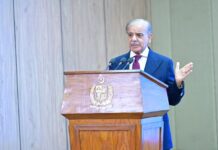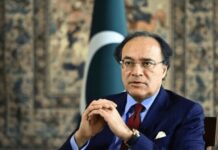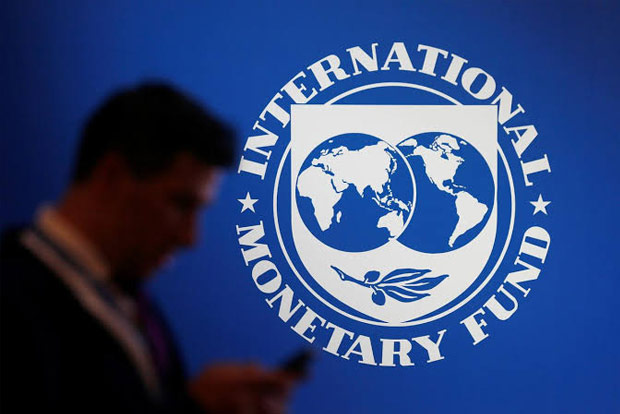The International Monetary Fund (IMF) has lowered Pakistan’s GDP growth forecast for the fiscal year 2024-25 to 2.6%, down from the earlier projection of 3.2%. The revision comes in light of weaker economic activity in the first half of the fiscal year and ongoing global uncertainties.
The IMF has released its latest report on the “First Review under the Extended Fund Facility (EFF)” and “Resilience and Sustainability Facility (RSF)”.
The report said that Pakistan’s policy efforts under the EFF have already delivered significant progress in stabilising the economy and rebuilding confidence, amidst a challenging global environment. Fiscal performance has been strong, with a primary surplus of 2.0% of GDP achieved in the first half of FY25, keeping Pakistan on track to meet the end-FY25 target of 2.1% of GDP.
The Fund highlighted that the GDP growth slowed in the first half, with the first quarter recording a growth of just 1.3% and the second quarter at 1.7%. This decline was attributed to lower yields from major Kharif crops and sluggish industrial performance.
The IMF report notes that the public sector’s development program was projected at 2.3% of GDP but has been revised to 2.5%. However, the Planning Ministry’s disbursements do not support this upward revision. Defence spending, which was budgeted at 1.7% of GDP, is expected to increase to 1.9% in the next fiscal year.
On the inflation front, the IMF revised its inflation forecast downward for the outgoing fiscal year, primarily driven by tight macroeconomic policies and lower food and energy prices. However, core inflation remains elevated at around 9%. The IMF expects inflation to increase temporarily in the coming months, with a return to the target range of 5–7% in fiscal year 2026, assuming continued tight monetary policy.
The current account deficit (CAD) for FY25 is projected at $0.2 billion (0.1% of GDP), benefiting from resilient exports and stronger remittance inflows. The IMF has also revised its export forecast to $31.305 billion for FY25, down from the originally targeted $31.751 billion. Imports are expected to increase slightly to $57.634 billion, compared to the programmed $57.180 billion.
Looking ahead, the IMF projects that Pakistan’s CAD will modestly widen to around 1% of GDP over the medium term, driven by increased imports. International reserves are expected to continue to improve, aided by financing from multilateral and bilateral creditors and anticipated RSF disbursements of $1.3 billion.
The IMF also noted limited access to external commercial financing during the program, with a small “Panda” bond issuance expected in FY26, followed by a gradual return to the Eurobond/Global Sukuk markets in FY27.
Following the Executive Board discussion, Nigel Clarke, Deputy Managing Director and Chair, made the following statement:
“Pakistan has made important progress in restoring macroeconomic stability despite a challenging environment. Since the approval of the Extended Fund Facility, the economy continues to recover, with inflation sharply lower and external buffers notably stronger. Risks to the outlook remain elevated, however, particularly from global economic policy uncertainty, rising geopolitical tensions, and persistent domestic vulnerabilities. Against this backdrop, the authorities need to maintain sound macroeconomic policies and accelerate reforms to safeguard the macroeconomic gains and underpin stronger and sustainable, private sector-led medium-term growth.
“The steadfast implementation of the FY2025 budget and the passage of key fiscal reforms, notably the Agricultural Income Tax, underpin the process of rebuilding policy making credibility. Continuing to mobilize greater revenue from undertaxed sectors and the noncompliant will make the tax system more equitable and efficient. This, combined with federal and provincial spending discipline, will strengthen sustainability, build resilience, and reduce the public sector’s crowding out of private credit.
“Timely implementation of power tariff adjustments has helped reduce the stock and flow of circular debt. Meanwhile, cost-side reforms are showing early signs of success but need to be accelerated to safeguard the energy sector’s viability and improve Pakistan’s competitiveness.
“The State Bank of Pakistan’s (SBP) tight monetary policy stance has been pivotal in reducing inflation to historic lows. Monetary policy should remain appropriately tight and data-dependent to ensure inflation is anchored within the SBP’s target range. A more flexible exchange rate will facilitate the adjustment to external and domestic shocks, aiding the rebuilding of reserves. Prompt action to address undercapitalised financial institutions and vigilance over the financial sector are necessary for financial stability. Strengthening of AML/CFT frameworks is also needed.
“Accelerating structural reforms will unlock Pakistan’s competitiveness, creating conditions to attract high-impact private investment. Reform priorities include reducing trade and investment barriers, advancing SOE reforms, and decisively strengthening governance and anticorruption institutions.
“Reducing Pakistan’s vulnerability to extreme weather events will enhance macroeconomic stability and fiscal sustainability. The reforms under the Resilience and Sustainability Facility aim to build resilience to natural disasters by strengthening public investment processes, supporting efficient use of scarce water resources, strengthening coordination of natural disaster response and financing, improving the information on climate-related risks, and supporting Pakistan in meeting its international commitments.”























